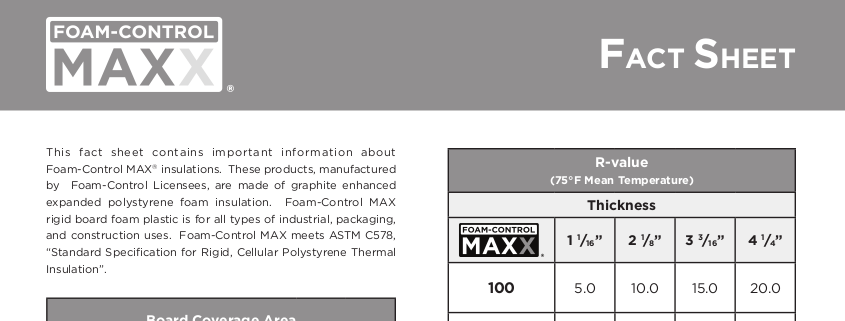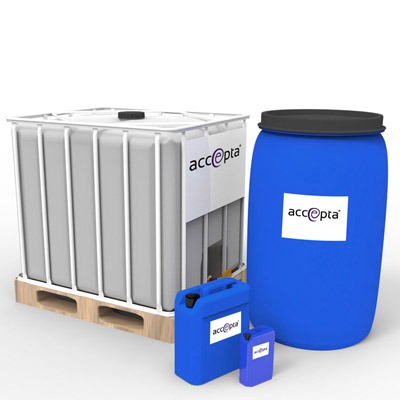Exactly How to Accomplish Optimum Foam Control for Improved Manufacturing Performance
Exactly How to Accomplish Optimum Foam Control for Improved Manufacturing Performance
Blog Article
The Role of Foam Control in Enhancing Product Quality and Efficiency
Foam control is an often-overlooked yet vital part in the quest of item high quality and operational performance across diverse industries. This conversation will discover the diverse impact of foam on both item integrity and production procedures, increasing important inquiries regarding the strategies that can be utilized to optimize foam control.

Recognizing Foam Development
Foam formation is a complex sensation that can significantly influence product quality and functional efficiency throughout different markets. It occurs when gas bubbles become entraped in a liquid, leading to the production of a frothy framework. A number of factors add to this process, consisting of the physical and chemical residential or commercial properties of the liquid, the existence of surfactants, and the problems under which mixing takes place. Comprehending these variables is important for managing foam successfully.
The liquid's viscosity and surface area stress play essential roles in foam stability. Surfactants, for example, can reduce surface stress, advertising bubble development but likewise boosting foam security, which can be problematic in specific applications. Mechanical frustration, temperature level variations, and the presence of impurities can exacerbate foam generation, making it necessary to monitor these aspects during production processes.
Industries such as food and beverage, pharmaceuticals, and chemical manufacturing should be especially cautious regarding foam control. By grasping the underlying systems of foam formation, organizations can execute targeted methods to alleviate its impacts, consequently protecting operational efficiency and guaranteeing consistent product performance.
Influence on Product Top Quality
The presence of foam can significantly compromise item top quality across different industries. In manufacturing procedures such as food and beverage, drugs, and cosmetics, too much foam can cause inconsistent product formulations. For example, in food production, foam might catch air, impacting texture and flavor, which can inevitably change consumer understanding and fulfillment.
Furthermore, foam can prevent the harmony of paints and finishes, leading to defects like bubbles and irregular finishes. In pharmaceutical applications, foam can conflict with the precise application of fluid medicines, possibly affecting therapeutic effectiveness and patient safety and security. These top quality concerns not only lessen the end item's appeal however can also cause expensive recalls and damage to brand name credibility.
Additionally, the existence of foam can complicate quality assurance steps, making it hard to accomplish precise measurements and constant outcomes. Efficient foam control not just reduces these threats however also boosts overall product top quality by guaranteeing that formulations satisfy rigorous industry requirements. By buying foam control strategies, business can secure their products, improve consumer satisfaction, and preserve an one-upmanship in the industry.
Functional Obstacles From Foam
Reliable procedures in different markets can be seriously interrupted by the presence of foam, which positions several obstacles throughout manufacturing procedures. Foam can hinder mixing a fantastic read and reaction times, hindering the effectiveness of chemical procedures. In markets such as food and drink, foam formation can cause unreliable fill degrees, causing item waste and incongruities in product packaging.

In atmospheres where health is critical, such as drugs and food handling, foam can complicate cleansing procedures, creating hidden reservoirs for impurities. This not just elevates top quality worries but additionally can lead to compliance concerns with regulative criteria.
In addition, the emotional effect on operators can not be ignored; too much foam can develop a chaotic workplace, bring about lowered morale and performance. In recap, dealing with the operational obstacles posed by foam is crucial to preserving effectiveness and item quality in different sectors.
Approaches for Efficient Foam Control
Exactly how can markets successfully reduce the obstacles presented by foam? Reliable foam control strategies are necessary for boosting item quality and functional efficiency.
Along with chemical remedies, process optimization plays a critical duty in foam management. Industries can evaluate and readjust specifications such as mixing rate, temperature, and pressure to decrease foam generation. Applying tools alterations, like setting up foam-breaking devices or adjusting tank layout, browse around this web-site can further aid minimize foam degrees.
Routine tracking and analysis of foam behavior within manufacturing procedures are also crucial. Utilizing sophisticated sensing units and analytics can offer real-time information, allowing for prompt interventions and changes. Team training is similarly vital; making certain that personnel are experienced concerning foam dynamics and control methods can result in proactive foam administration.
Study and Market Applications
While several industries deal with unique obstacles connected to foam control, study expose that customized approaches can dramatically boost both item top quality and functional performance. In the pharmaceutical industry, as an example, a leading supplier implemented a custom-made foam control method that decreased foam development during fermentation procedures. This innovation not just boosted return by 15% however likewise reduced contamination risks, ensuring higher item stability.
Similarly, in the food and beverage sector, a major dairy producer challenged too much foam throughout pasteurization - Foam Control. By presenting a specialized antifoam agent, they lowered handling time by 20%, which straight equated to boosted throughput and minimized energy intake. The application of foam control gauges ensured consistent item texture and preference, reinforcing brand name loyalty
In the chemical manufacturing field, a study highlighted the successful application of foam control in wastewater therapy processes. The application of a real-time surveillance system allowed drivers to change antifoam dose dynamically, causing a 30% reduction in chemical use and enhanced effluent high quality.
These study highlight the diverse applications of foam control throughout markets, stressing its crucial function in enhancing item quality and functional performance.
Verdict
In final thought, effective foam control is indispensable anchor to improving item top quality and functional performance throughout different markets. Ultimately, focusing on foam control adds to improved efficiency, securing brand name credibility, and enhancing consumer contentment, highlighting its importance in quality guarantee within producing procedures.
Foam control is an often-overlooked yet crucial part in the search of product high quality and functional effectiveness throughout varied markets. Team training is similarly important; making certain that employees are experienced regarding foam characteristics and control strategies can lead to aggressive foam administration.
While several markets encounter special obstacles connected to foam control, instance researches expose that customized techniques can significantly boost both product top quality and operational performance (Foam Control). In the pharmaceutical industry, for circumstances, a leading manufacturer implemented a personalized foam control technique that lowered foam formation throughout fermentation procedures.In final thought, reliable foam control is essential to boosting product top quality and operational effectiveness throughout various markets
Report this page